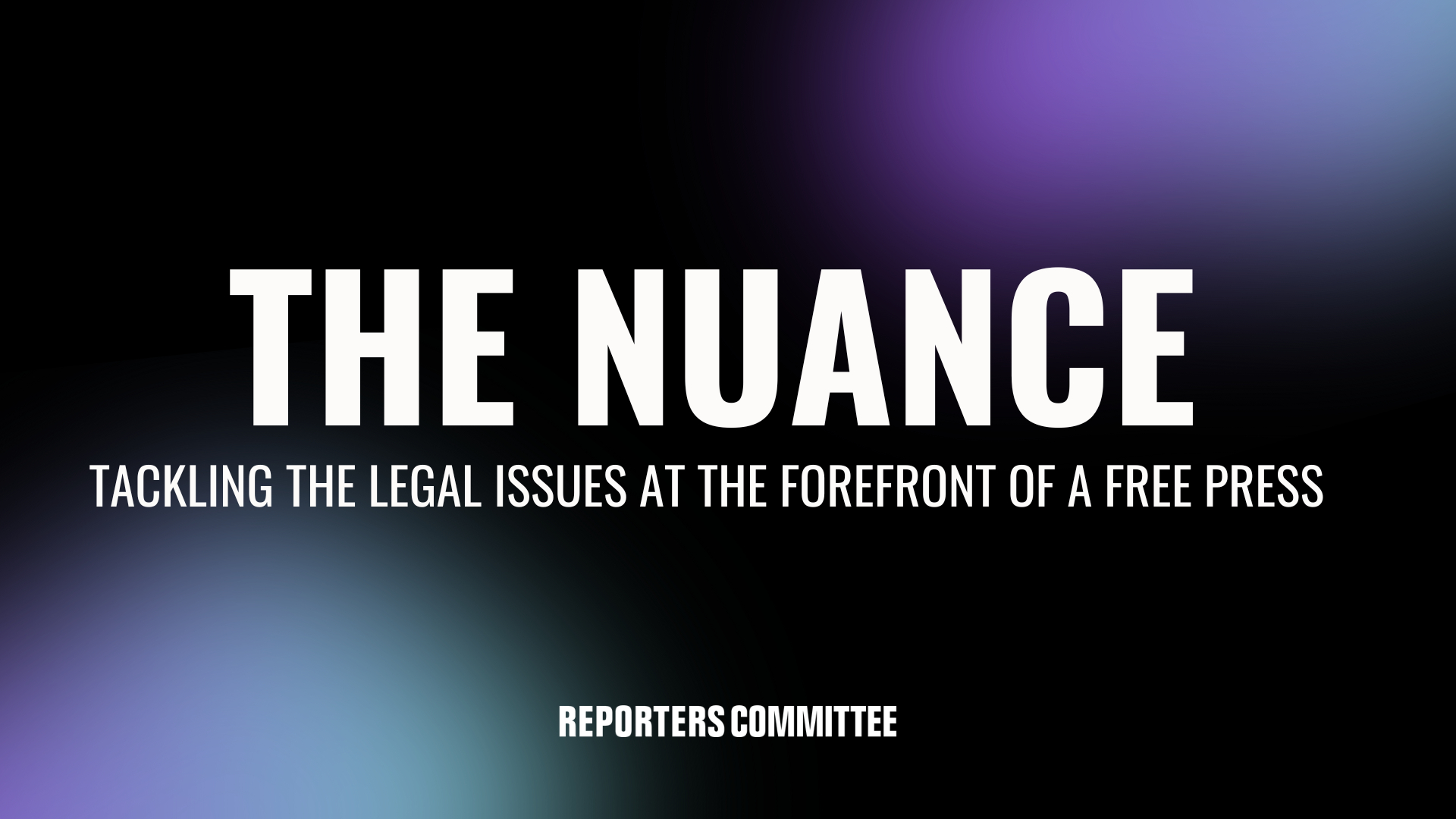US Supreme Court won’t review decision that ratchets up legal risk at protests

If you like this post, sign up to get The Nuance newsletter delivered straight to your inbox every Sunday night!
One of the First Amendment’s bedrock protections for a free press and free expression is the rule that an individual lawfully exercising their constitutional rights can’t be held liable for a stranger’s uncoordinated decision to break the law nearby. As we’ve often emphasized, that rule is a critical safeguard for reporters who attend tumultuous events where violence may break out — political rallies, say, or mass demonstrations — in order to bring the public the news. But a recent order of the U.S. Supreme Court gives reason for concern that that longstanding First Amendment principle may no longer have five votes among the justices.
The case, Mckesson v. Doe, has come before the justices before. In it, a Louisiana law enforcement officer alleges that he was struck by a rock while policing a Black Lives Matter demonstration — but rather than sue the individual who threw the rock, the officer chose to sue activist DeRay Mckesson for organizing the protest in the first place. Under the Court’s 1982 decision in NAACP v. Claiborne Hardware, that should have made for an easy case: Before you can be held liable for another person’s decision to break the law at a demonstration, the First Amendment requires proof that you “authorized, directed, or ratified” the stranger’s violent conduct. By insisting on that evidence of bad intent, the Constitution provides breathing room for lawful newsgathering and expression, ensuring that journalists can go about their jobs at chaotic events without fear that a third-party’s unlawful conduct will be imputed to them.
Remarkably, the U.S. Court of Appeals for the Fifth Circuit allowed Doe’s lawsuit to go forward regardless — even though Doe never alleged that Mckesson intended his injury — on the theory that Mckesson was negligent as to the risk that the protest would turn violent. (As the Reporters Committee’s Gabe Rottman wrote in a 2018 op-ed for The Washington Post, a similar theory was put to dangerous but ultimately unsuccessful use against journalists in connection with protests against Donald Trump’s presidential inauguration in 2017). In 2020, in response to a previous bid by Mckesson to have the Supreme Court hear the case, the justices issued an unsigned order that ordered the Fifth Circuit to ask the Louisiana Supreme Court to clarify whether state tort law permitted Doe’s lawsuit before wading into a question “fraught with implications for First Amendment rights.” But when the Louisiana Supreme Court answered that state law did, in fact, provide Doe with the grist for a lawsuit, the Fifth Circuit reinstated its conclusion that the First Amendment offered no defense.
Mckesson then turned to the Supreme Court again. The justices weighed the case at seven (!) conferences before weighing in — often a sign that some sort of behind-the-scenes haggling is afoot. Last week, the Court ultimately declined to review the case, accompanied by a short statement from Justice Sonia Sotomayor. In carefully neutral language, Sotomayor noted that the Fifth Circuit’s opinion “did not have the benefit” of the Court’s 2023 decision in Counterman v. Colorado, which reiterated the role that strict intent requirements play in providing breathing room for First Amendment freedom. Mckesson, she suggested, would still have an opportunity to argue to the Fifth Circuit that it should now revisit its earlier decision in light of Counterman.
There may be, then, a narrow path forward for Mckesson. But it’s an unnerving development all the same that the Court couldn’t assemble a majority to reverse the Fifth Circuit outright — the outcome Sotomayor may well have spent those weeks trying to build support for. At a time when the prospect of significant protest activity once again ratchets up the legal risk facing journalists who cover civic unrest, the Court can’t afford to blink on core First Amendment protections.
The Technology and Press Freedom Project at the Reporters Committee for Freedom of the Press uses integrated advocacy — combining the law, policy analysis, and public education — to defend and promote press rights on issues at the intersection of technology and press freedom, such as reporter-source confidentiality protections, electronic surveillance law and policy, and content regulation online and in other media. TPFP is directed by Reporters Committee attorney Gabe Rottman. He works with RCFP Staff Attorney Grayson Clary and Technology and Press Freedom Project Fellow Emily Hockett.